
Container management UI tools include: 1. Portainer, which is a lightweight web-based Docker management GUI; 2. Kitematic, which is a GUI tool that can run containers faster and easier; 3. LazyDocker, a terminal-based visual query tool; 4. DockStation, a desktop application; 5. Docker Desktop, which can set resource limits for Docker, such as memory, CPU, and disk image size; 6. Docui.
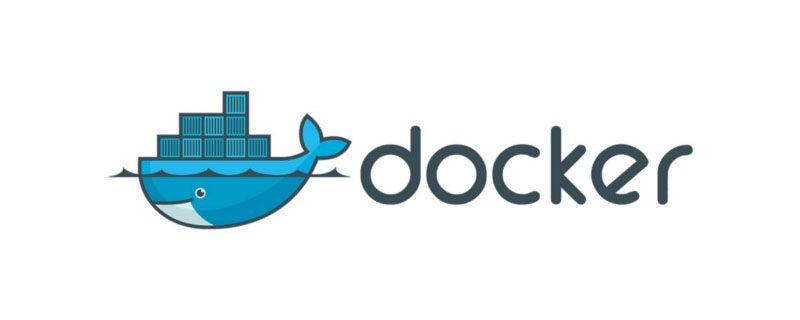
The operating environment of this tutorial: linux5.9.8 system, docker-1.13.1 version, Dell G3 computer.
Are you still monitoring containers in numerous console windows, or are you more passionate about using terminal commands? Using Docker's graphical user interface (GUI) tool makes it easier to manage containers and improve efficiency. And they're all free.
6 Docker container management GUI tools
1. Portainer
Portainer is a light A massive web-based Docker management GUI that allows you to easily manage different Docker environments (Docker hosts or Swarm clusters). It consists of a single container that can run on any Docker engine and is designed to make deployment easier.
Portainer is a new wheel reinvented by the author of DockerUI. DockerUI can only be used on a single machine and cannot use docker's swarm. Development has been stopped at present.
Official website https://www.portainer.io
Look at the Portainer Web UI interface in the picture below
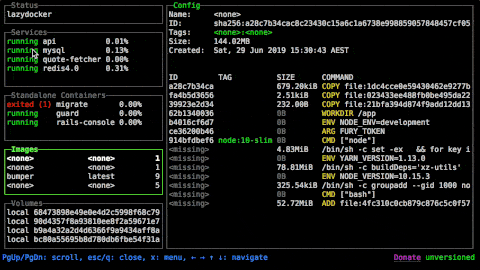
2. Kitematic
Kitematic is a Docker GUI tool that can run Docker containers faster and easier. It now supports Mac/Windows/Linux.
Search for the image you need and create a container. You'd better go to Kitematic. Kitematic provides basic configuration options, but for more advanced setup, you may need to enter the command line.
Official website https://kitematic.com
github address https://github.com/docker/kitematic


3. LazyDocker (UI terminal)
LazyDocker is a terminal-based visual query tool that supports keyboard operations and mouse clicks.

Lazydocker can meet the needs of mouse and keyboard access. For some elements, a context menu is available, where you can find all frequently used commands with shortcut keys. And not only does it have basic commands to operate containers, basic statistics, logs and checks, but it also has basic functionality. Graphs are also available to display key metrics, by default there are CPU and memory usage and processes. In addition, it can be configured for almost any desired indicator.
For the selected image, you can view the commands executed during runtime and the inherited layers in the Dockerfile. In addition to modifying the available commands and adding new commands, it also provides cleaning of unused containers, images, and volumes.
Lazydocker provides a minimalist terminal interface, which is really helpful for some less complex projects.
4. DockStation
DockStation is a roll desktop application that supports Linux, Mac, and Windows operating systems.
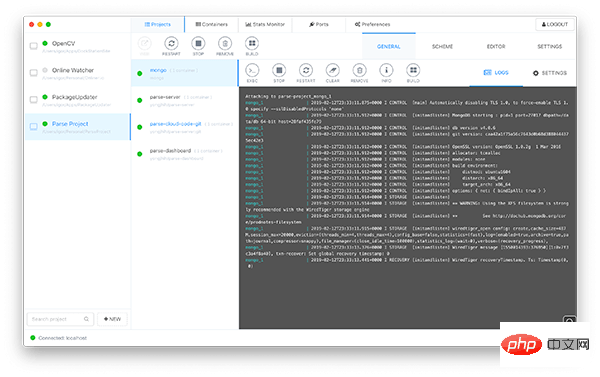
DockStation is a free, full-featured desktop application that allows you to use docker and docker-compose. Native Docker Compose CLI commands can be used via docker-compose.yml to help generate a clean native file that can be used even outside the application. It can also help manage containers and services, including remote and local containers, and monitor them, such as log monitoring, searching logs, grouping, running tools, and obtaining container information. There are other tools available for general, multiple and single monitoring of container resources.
Using DockStation, you can easily track CPU, memory, network I/O usage and open ports. All work can be organized into projects, where the status of each container can be checked, graphical scenarios can be built, and each image in the project and the relationships between them can be visualized. In addition, DockStation is very popular on Docker Hub.
5. Docker Desktop
Docker Desktop is a desktop application. Since Docker-toolbox (with Kitematic) has been deprecated, it is recommended that all users use Mac Use Docker Desktop on Windows.
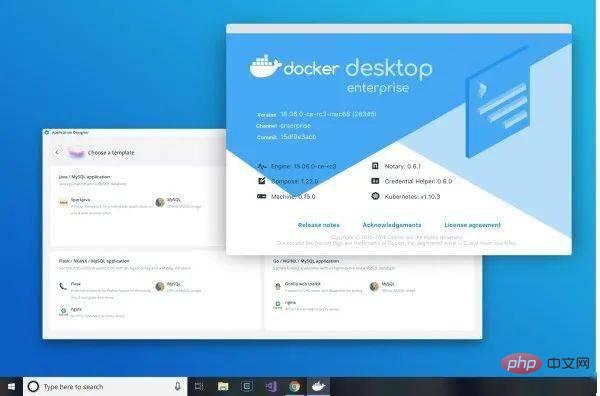
This tool can set resource limits for Docker, such as memory, CPU, disk image size, file sharing, proxy and network, etc., configure Docker engine, command line and Kubernetes.
Using the dashboard, you can not only use basic container operations, but also view logs, basic statistics and inspect containers. All of these can be invoked via the context menu or an indicator in the status bar.
6. Docui
Docui is also a UI terminal that supports Mac and Linux operating systems. Requires GO version 1.11.4 or above, Docker engine 18.06.1 or above, and Git.
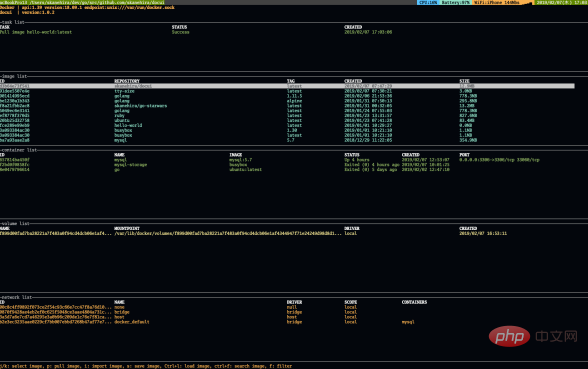
Docui is meant to facilitate the creation and configuration of new containers/services, where you can find many keybindings for all necessary operations.
You can use functions such as image search, saving and importing, inspection and filtering; container creation and deletion, start and stop, inspection and renaming; volume creation and deletion, inspection and filtering, and network deletion and other functions.
Recommended learning: "docker video tutorial"
The above is the detailed content of What are the docker container management UIs?. For more information, please follow other related articles on the PHP Chinese website!
 The difference between k8s and docker
The difference between k8s and docker
 What are the methods for docker to enter the container?
What are the methods for docker to enter the container?
 What should I do if the docker container cannot access the external network?
What should I do if the docker container cannot access the external network?
 What is the use of docker image?
What is the use of docker image?
 How to solve accessviolation
How to solve accessviolation
 What is the transfer limit of Alipay?
What is the transfer limit of Alipay?
 The difference between distributed and microservices
The difference between distributed and microservices
 How to upgrade Hongmeng system on Honor mobile phone
How to upgrade Hongmeng system on Honor mobile phone